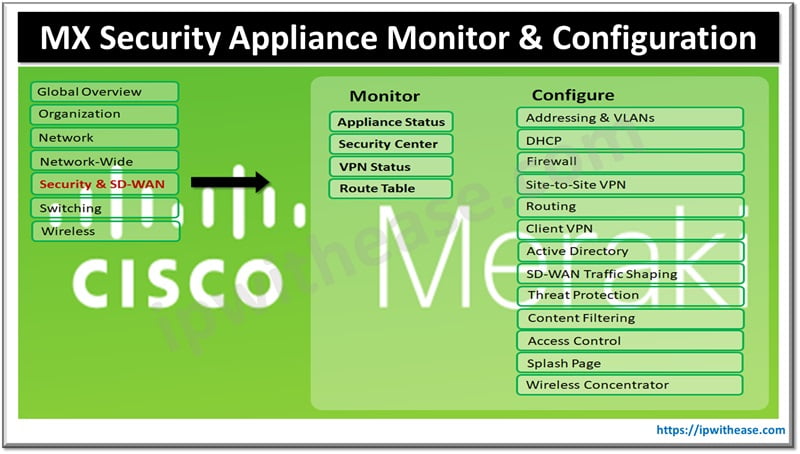Table of Contents:
VLAN trunking protocol (VTP) operates at Layer 2 as a messaging protocol which maintains VLAN configuration consistency with addition, deletion, and renaming VLANs within a VTP domain. A VTP domain includes one or more network devices having common VTP domain names interconnected with trunks. VTP reduces misconfiguration and configuration inconsistencies significantly which could result in a number of issues in the VLAN ecosystem such as duplicate VLANs names, incorrect VLAN types and security violations.
Today we look more in detail about how to configure VTP (VLAN trunking protocol) on a Cisco switch and setup pruning.
Configure VTP
VTP configuration guidelines and pre-requisites
- All network devices in VTP domain should be running same version of VTP
- It is mandatory to configure password on each network device when VTP is in secure mode in a management domain
- Enabling / disabling pruning on a VTP server enables/disables VTP pruning for complete management domain
What is VTP Pruning?
VTP is used for communication between switches to exchange VLAN information in the same VTP domain. VLAN trunking protocol (VTP) pruning feature in Cisco switches stops VLAN traffic update information being sent down to trunk links if updates are not required. If VLAN traffic is required later then VTP will add VLAN back to the trunk link dynamically. In a normal scenario, switch does a flood broadcast, multicast, and unicast frames where the destination MAC address is not known to all ports.
In source VLAN of neighbour switch if there is no active port then this kind of broadcast is of no use but unwanted excessive traffic will create congestion in the network. Pruning feature helps in increasing available bandwidth by reduction of unwanted flooded traffic.
VTP pruning increases bandwidth by putting restrictions on flooded traffic to those trunk links that traffic must use to access suitable network devices. By default, the pruning feature is disabled. For effective pruning all devices in the management domain either support pruning or we have to configure VLANs manually which are allowed on those trunks.
Related: What is VLAN Trunking Protocol Pruning
Scenario Example
Figure below shows a switched network having VLAN trunking protocol pruning feature enabled.

The broadcast traffic from switch 1 is not forwarded to switch 3, 5, 6 as traffic for Red VLAN is pruned on links (Interface 5 ; switch 2 and Interface 4; switch 4). When pruning is enabled on a VTP server it enables for the entire management domain. VTP pruning takes a few seconds to be active and by default VLAN 2 to VLAN 1000 can have pruning enabled. VTP pruning does not prune traffic for non-eligible VLANs. VLAN 1 is not eligible for pruning hence traffic cant be pruned on VLAN 1.
To configure pruning on a trunking LAN interface, use command – switchport trunk pruning vlan. VLAN pruning eligibility can be set irrespective of whether pruning is enabled / disabled for VTP domain, whether VLAN exists or LAN interface is already trunking.
Default VTP Configuration
VTP default configuration is as under:
VTP domain name – Null
VTP mode – Transparent
VTP Ver 2 enable state – Ver 2 is disabled
VTP password – none
VTP pruning – disabled
To enable pruning in management domain use of keyword ‘no’ disables VTP pruning in management domain
Switch# [no] vtp pruning
Switch# vtp pruning [Pruning switched ON]
This command verifies the configuration
Switch# show vtp status
Switch# show vtp status | include Pruning VTP Pruning Mode : EnabledPost VTPN pruning is enabled, view the configuration with the following command:
Switch#show vtp
VTP Version : 2
Configuration Revision : 2
Maximum VLANs supported locally : 1005
Number of existing VLANs : 2
VTP Operating Mode : Server
VTP Password : test1
VTP Domain Name : cisco
VTP Pruning Mode : Enabled
VTP V2 Mode : Disabled
VTP Traps Generation : Enabled
MD5 digest : 0xB7 0xC9 0x9D 0xB4 0xD3 0xBA 0×92 0×02
Configuration last modified by 168.192.1.18 at 7-12-24 01:22:24Continue Reading:
VTP Modes and Versions: VTP v1, VTP v2 and VTP v3
Top 30 VTP Interview Questions
ABOUT THE AUTHOR

You can learn more about her on her linkedin profile – Rashmi Bhardwaj



